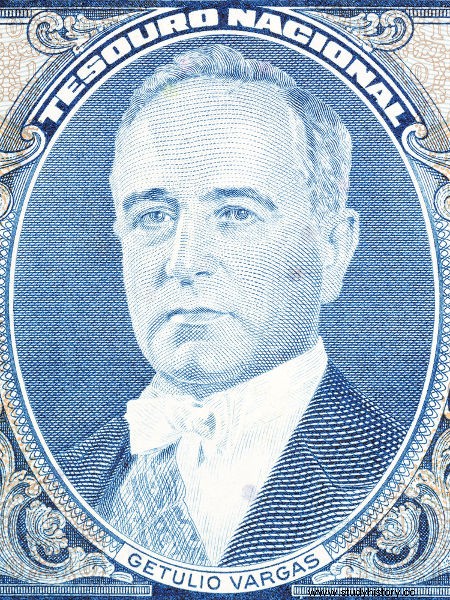
The so-called March West was a project developed by the government of Getúlio Vargas during the Estado Novo dictatorship. This project was created with the aim of promoting economic integration and population growth in the North and Midwest regions of Brazil. This march, however, partially achieved its objectives.
March to the West and the dictatorship of the Estado Novo
During the Estado Novo dictatorship, the government of Getúlio Vargas promoted the “March to the West” project, which aimed to achieve economic integration from the North and Center-West regions, considered, until then, isolated from the other coastal regions. In addition, the project aimed to promote housing development of these areas evaluated as sparsely populated in Brazil.
This project was developed during the dictatorial period of the government of Getúlio Vargas, which began after the Estado Novo coup applied in 1937. The March to the West was advertised by the Department of Press and Propaganda (DIP), which was responsible for the official propaganda of the Getulist government and for censorship.
For the economic integration and housing development project to be successful, the government stipulated as fundamental the development of the road network of Brazil to facilitate the connection of these regions with the coast and facilitate the flow of agricultural production. For this, the State of Goiás was seen as essential because of its centralized position in Brazilian geography.
To promote the program, the Brazilian government appointed Cassiano Ricardo , an influential modernist writer from Brazil at the time. He had also accumulated functions in the Getúlio Vargas government as the official censor of an important newspaper broadcast by the government and also headed the Political Cultural Department of Rádio Nacional.
Cassiano Ricardo had a prominent position at the time as a defender of the government of Getúlio Vargas. He shared conservative and reactionary ideals and, in his book “March to the West:the influence of the flag on the social and political formation of Brazil ”, defended Getúlio's program, in addition to defending the Estado Novo dictatorship.
In the book, this writer ideologically constructed the importance of the project promoted by the Vargas government. For him, the March to the West program was important for Brazil, as it would rescue true Brazilianness, which, according to him, would be essential to rid Brazil of the “foreign vices” that contaminate the coastal regions. Vargas also saw foreigners as subversive individuals who were responsible, for example, for the outbreak of labor strikes in Brazil.
Westward March Structure
The basic characteristic of the March to the West program was to promote the integration of the Midwest and North of Brazil with the coastal regions. This integration would take place from the population development of both regions, combined with economic development and the road network. To promote the housing development of these territories, the government promoted the creation of housing colonies in several states:Goiás , Amazons , Mato Thick , Para and Maranhão .
For economic development, the government advocated taking advantage of these regions to increase agricultural production. A step considered essential by the government – and even strongly defended by Cassiano Ricardo – was the dismantling of large land properties known as latifundia. Cassiano Ricardo's proposal advocated the development of small properties to develop family farming .
Furthermore, the housing colonies created during the March to the West were primarily targeted at poor Brazilians . The government's main target was Northeasterners who lived in regions with little economic development.
Vargas' project managed, in part, to achieve its objectives, as there was a population growth in the target regions of the program, in addition to an increase in production and the road network. Other projects, however, such as the dismantling of large estates, were not carried out and the colonies created by the government were criticized, as they lacked structure and state support.
Take the opportunity to check out our video lesson related to the subject:
